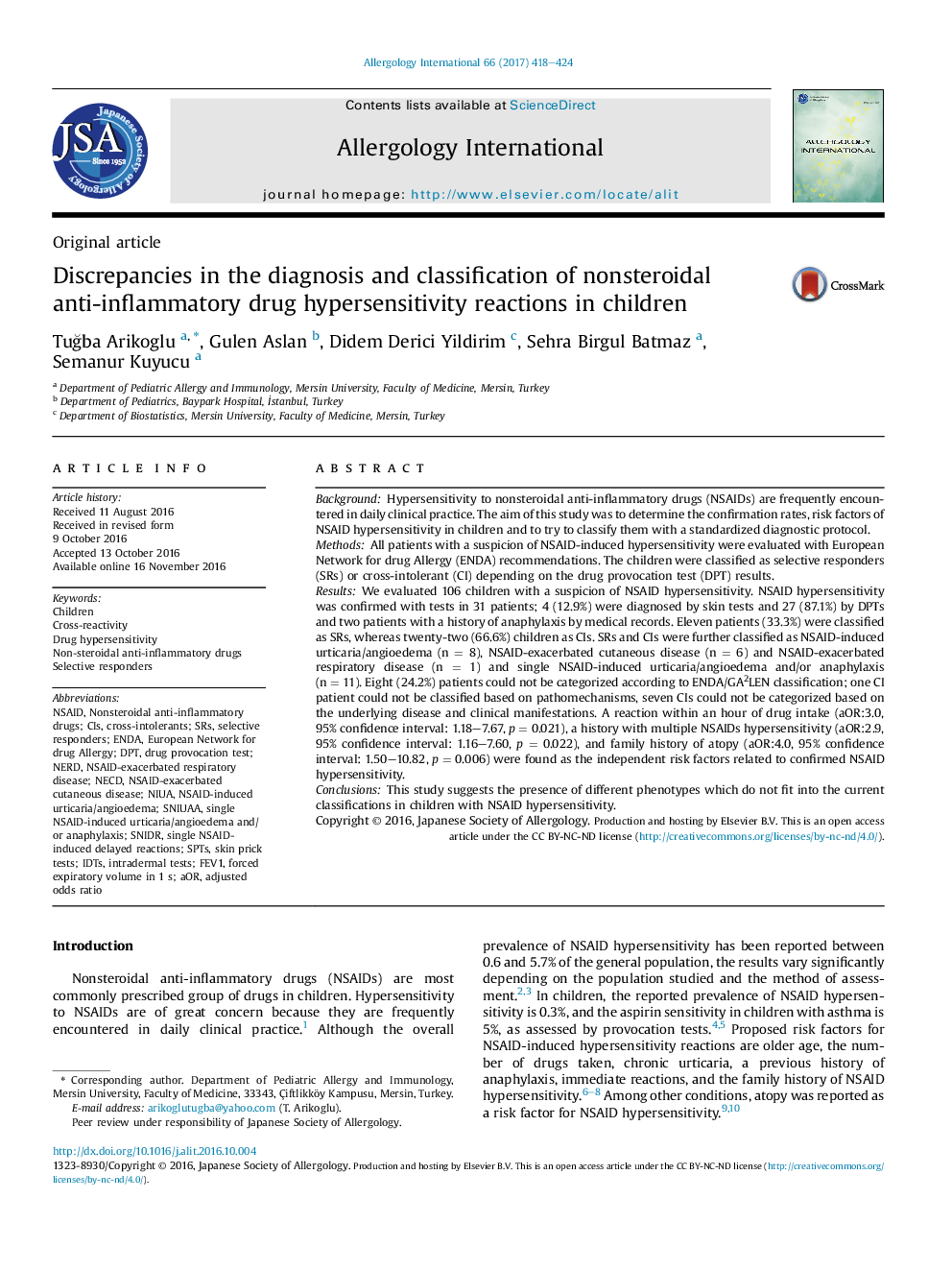| کد مقاله | کد نشریه | سال انتشار | مقاله انگلیسی | نسخه تمام متن |
|---|---|---|---|---|
| 5665257 | 1407739 | 2017 | 7 صفحه PDF | دانلود رایگان |
BackgroundHypersensitivity to nonsteroidal anti-inflammatory drugs (NSAIDs) are frequently encountered in daily clinical practice. The aim of this study was to determine the confirmation rates, risk factors of NSAID hypersensitivity in children and to try to classify them with a standardized diagnostic protocol.MethodsAll patients with a suspicion of NSAID-induced hypersensitivity were evaluated with European Network for drug Allergy (ENDA) recommendations. The children were classified as selective responders (SRs) or cross-intolerant (CI) depending on the drug provocation test (DPT) results.ResultsWe evaluated 106 children with a suspicion of NSAID hypersensitivity. NSAID hypersensitivity was confirmed with tests in 31 patients; 4 (12.9%) were diagnosed by skin tests and 27 (87.1%) by DPTs and two patients with a history of anaphylaxis by medical records. Eleven patients (33.3%) were classified as SRs, whereas twenty-two (66.6%) children as CIs. SRs and CIs were further classified as NSAID-induced urticaria/angioedema (n = 8), NSAID-exacerbated cutaneous disease (n = 6) and NSAID-exacerbated respiratory disease (n = 1) and single NSAID-induced urticaria/angioedema and/or anaphylaxis (n = 11). Eight (24.2%) patients could not be categorized according to ENDA/GA2LEN classification; one CI patient could not be classified based on pathomechanisms, seven CIs could not be categorized based on the underlying disease and clinical manifestations. A reaction within an hour of drug intake (aOR:3.0, 95% confidence interval: 1.18-7.67, p = 0.021), a history with multiple NSAIDs hypersensitivity (aOR:2.9, 95% confidence interval: 1.16-7.60, p = 0.022), and family history of atopy (aOR:4.0, 95% confidence interval: 1.50-10.82, p = 0.006) were found as the independent risk factors related to confirmed NSAID hypersensitivity.ConclusionsThis study suggests the presence of different phenotypes which do not fit into the current classifications in children with NSAID hypersensitivity.
Journal: Allergology International - Volume 66, Issue 3, July 2017, Pages 418-424
